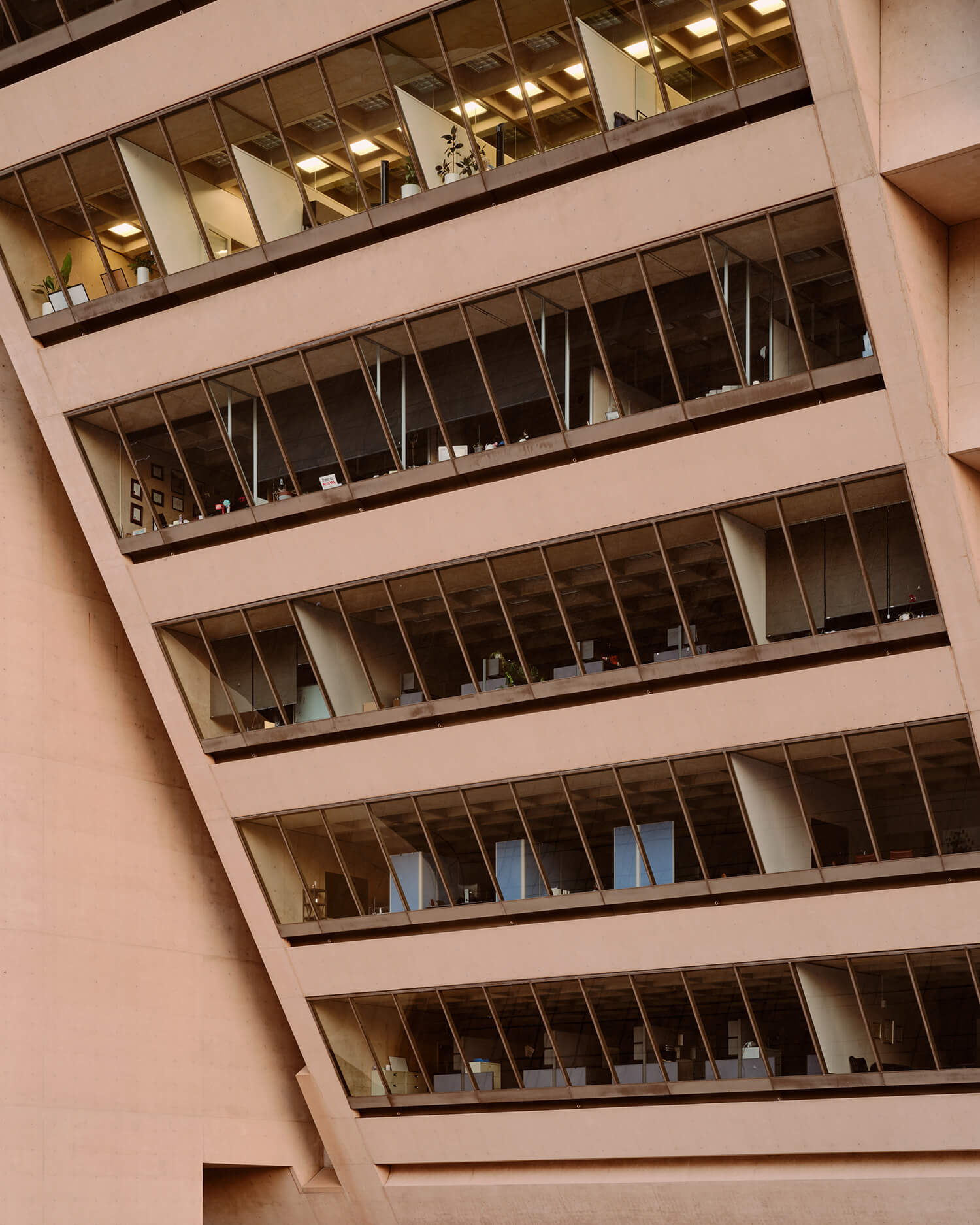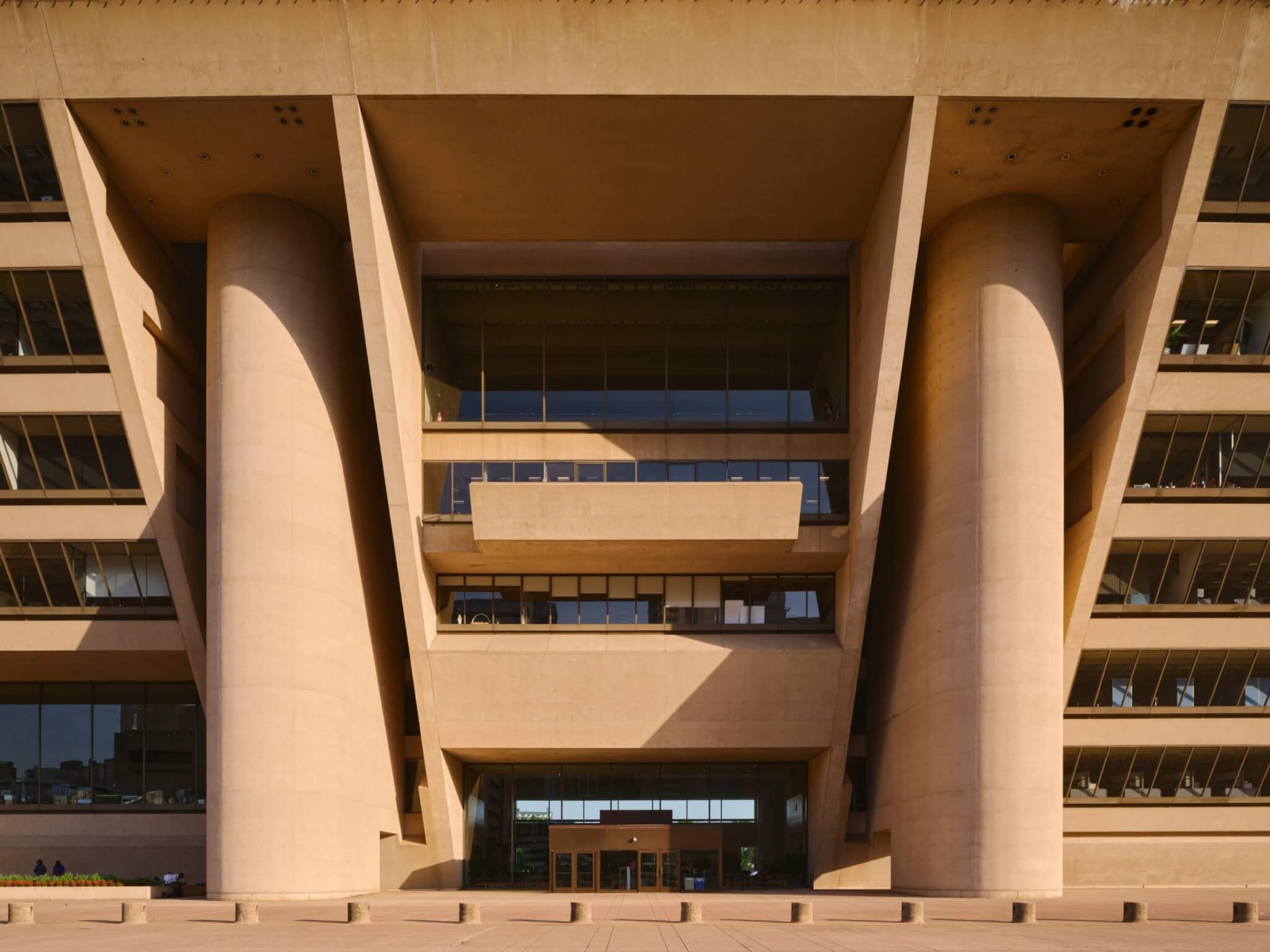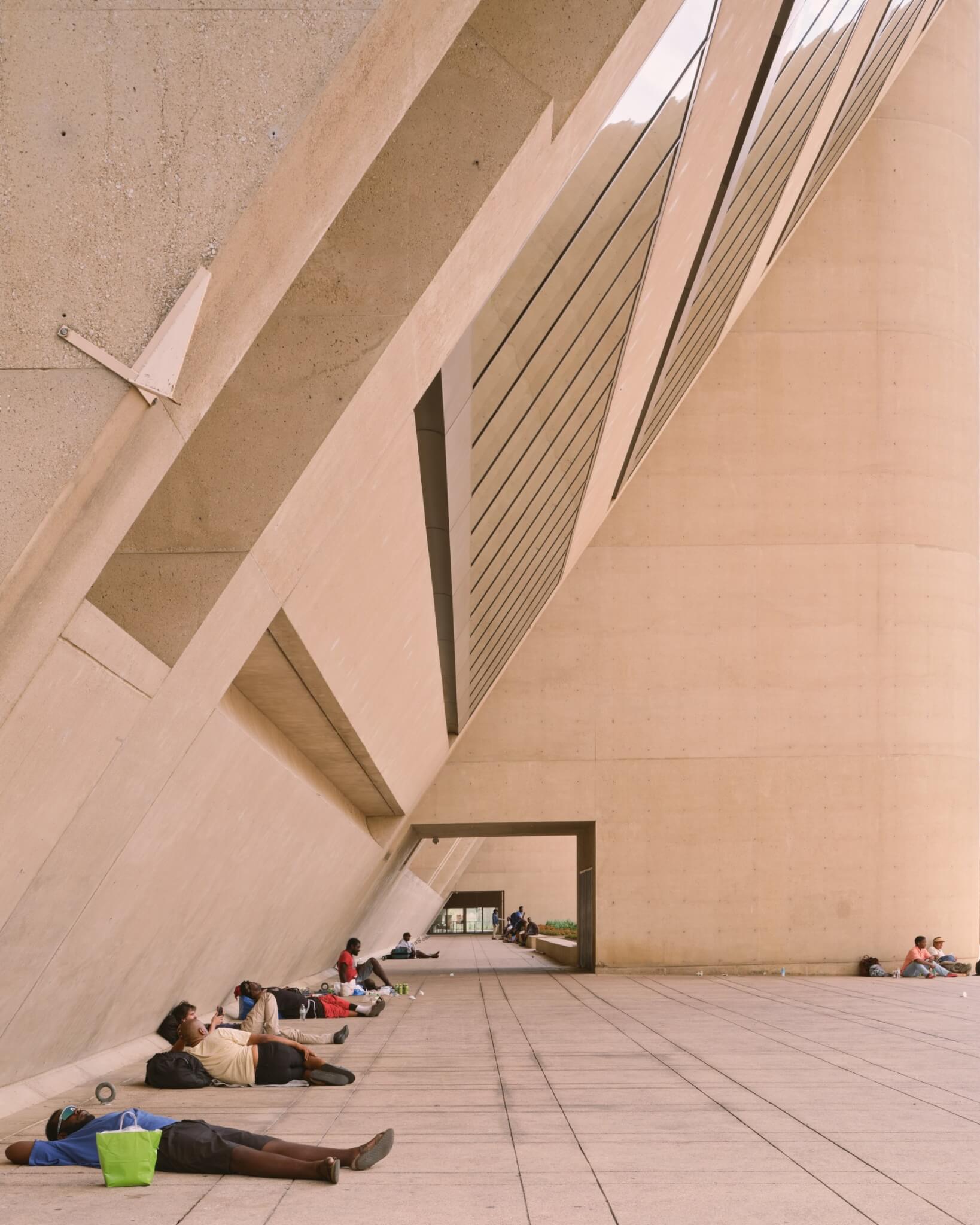Beneath the Texas sun, a plane of raw concrete tilts toward the skyline. Dallas City Hall, designed by I. M. Pei and completed in 1978, is a monumental composition of raw concrete and geometry. Its distinctive profile, made up of six stories that each widen as they rise, was conceived to express government transparency and civic dignity. For nearly half a century, it has served as Dallas’s most recognizable work of Brutalist architecture and appeared in films like RoboCop and Solange’s When I Get Home. Now, it may not survive the decade.
This month, Dallas City Council will continue to weigh whether to repair, sell, or demolish the 47-year-old landmark and a petition that pleas for its preservation is now circulating.
At a joint meeting on November 3, two council committees expressed interest in exploring relocation or investing hundreds of millions in repairs. “We can’t just move into an office tower and not have the other services that are needed by the taxpayer,” said Council Member Chad West, who chairs the finance committee. A resolution directing City Manager Kimberly Tolbert to outline relocation options is expected before the full council on November 12, with a final decision anticipated by year’s end.
Some city leaders argue selling the property could open valuable downtown land, adjacent to the new convention center slated to open in 2029, for redevelopment, possibly including a new arena for the Dallas Mavericks. Others see the proposal as a betrayal of the ideals Pei’s building was designed to represent.
“This is a significant part of downtown Dallas’ cultural fabric,” historic preservationist Ron Siebler told The Dallas Morning News. “Doing away with a historic building to create an arena is an extremely Dallas way of doing business.”

Mark Lamster, the architecture critic of The Dallas Morning News, was more direct. His pro-preservation piece begins with a bang: “Of all the irresponsible, ill-conceived, short-sighted, counter-productive, cynical, philistine and downright dumb ideas I’ve heard in my time writing about Dallas, the prospect of razing City Hall stands alone. Demolishing architect I.M. Pei’s iconic building would be an act of epic mismanagement indefensible on aesthetic, environmental, financial or moral grounds.” He calls the idea of demolishing City Hall a “boondoggle.”
Today, the building’s surfaces bear the marks of deferred maintenance with water leaks to failing electrical systems that have left the building in disrepair. Estimates for necessary upgrades range from $152 million to $345 million, while the city has historically allocated only a fraction of that for municipal maintenance.
But this is much less than what a new building would cost. Lamster writes that Willis Winters, a well-known architect in the city and former director of the City’s Park and Recreation Department, “has estimated the expense of replacement at $825 million.”
For many, the building’s tapered concrete volumes remain a proud emblem of Dallas’s civic identity. Its plaza, once a stage for protests and parades, was among the first spaces in the city designed for open public assembly.

“We’ve done more harm to it than good,” said Council Member Paula Blackmon, who supports restoration. “We haven’t taken care of it, and it’s sad.”
As of this week, a petition to “Save Dallas City Hall” has garnered over 2,800 signatures, calling on council members to halt demolition plans and commission a transparent study of renovation options. “City Hall is not just a building,” organizers wrote. “It represents our shared history, our commitment to progress, and our reputation as a world-class city.”
Lamster writes that “its destruction would arguably represent the most egregious demolition of an American public building since New York’s Penn Station was torn down in the 1960s, an act of philistinism that essentially launched the modern preservation movement.”
Across the country, midcentury civic buildings have become flashpoints for debates over public value and urban identity. Preservationists cite recent rehabilitations of other Brutalist landmarks, such as Boston’s City Hall, as evidence that renewal is possible. In March, the Dallas Landmark Commission voted unanimously to initiate landmark designation, effectively placing a two-year hold on any major alterations or demolition.

Still, practical concerns remain. “It’s easy to see why City Hall might have faded to the background,” said Council Member Gay Donnell Willis, citing voter priorities that have favored infrastructure, public safety, and convention projects. Others, like Paul Ridley, counter that the time has come to reinvest, “We saved money as a city by not investing in the building in the past. It’s now come due and it’s time to spend that money that we should have spent years ago.”

The debate has also spilled onto Reddit, where users trade jokes and earnest pleas alike. Some suggested converting the structure into a Spirit Halloween, while others invoked its cameo in the 1987 film RoboCop as a reason to save it. “Bite the bullet, Dallas. Spend the money on this building,” one commenter urged. Another took the opposite stance, “Insane. Sell it.”
Dallas City Hall’s looming concrete form may not be universally loved, but it remains instantly recognizable. The building still asks what kind of city Dallas wants to be. Will it be a city that preserves its monumental acts of faith, or one that trades them away when maintenance costs climb too high?
Lamster believes in the enduring civic gesture of Dallas, delivered at a historic moment when its national reputation was being rebuilt after the assassination of John F. Kennedy in 1963: “City Hall was conceived to represent Dallas at its best. It is bold, forward-looking, ambitious, generous and optimistic. In the evening, when the warm Texas sun sweeps across its front façade, it achieves a beauty that is close to the sublime. Destroying it would be an unforgivable act of self-harm.”
The council’s finance committee will meet again November 12 to determine Dallas City Hall’s next chapter.
→ Continue reading at The Architect's Newspaper
